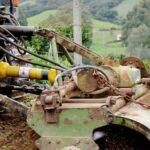Are you a gardening enthusiast living in the mountains of Colorado? Vegetable gardening in this unique environment presents its own set of challenges and opportunities. From understanding the effects of high altitude on plant growth to choosing the right vegetables for your garden, there are many factors to consider for a successful harvest. In this article, we will explore the specific considerations and best practices for vegetable gardening in the mountains of Colorado.
The high altitude of the Colorado mountains can have a significant impact on plant growth and requires gardeners to adapt their practices accordingly. Understanding the unique challenges posed by the altitude is crucial for maximizing the success of your vegetable garden. From selecting the right varieties to soil preparation, we will delve into how to overcome these challenges and make the most of your mountain garden.
In addition to understanding the effects of high altitude, it is important to choose the right vegetables for your mountainous garden. Certain vegetables thrive in this environment, while others may struggle to produce a bountiful harvest. By learning about the best vegetables to grow in the mountains of Colorado and how to select suitable varieties, you can set yourself up for a successful gardening experience. Stay tuned as we explore these topics and more throughout this article.
Understanding the High Altitude
One of the most significant challenges of vegetable gardening in the mountains of Colorado is the high altitude. The effects of high altitude on plant growth can be quite dramatic, as the air becomes thinner and temperatures drop more as altitude increases. It’s essential for gardeners to understand these effects in order to adapt their gardening practices for success.
Effects of High Altitude on Plant Growth
At higher altitudes, the air pressure decreases and the atmosphere thins out, which means that plants receive less oxygen and experience greater temperature fluctuations. These conditions can impact plant metabolism and nutrient uptake, making it more challenging for vegetables to thrive in such environments. In addition, intense sunlight at higher altitudes can lead to increased evaporation and transpiration rates in plants, requiring them to use more water to survive.
Adapting Your Gardening Practices
To overcome the challenges posed by high altitude, it’s important for vegetable gardeners in the mountains of Colorado to adapt their gardening practices accordingly. This may include choosing vegetables that are more resilient to cold temperatures and low oxygen levels, selecting varieties with shorter growing seasons, and using season extension techniques such as row covers or hoop houses to protect crops from harsh weather conditions.
Additionally, providing adequate irrigation and mulching can help retain soil moisture and regulate temperature fluctuations for healthier plant growth.
By understanding the effects of high altitude on plant growth and implementing appropriate adaptations, vegetable gardeners in the mountains of Colorado can increase their chances of success and enjoy a bountiful harvest despite the unique challenges posed by this environment.
Choosing the Right Vegetables
When it comes to vegetable gardening in the mountains of Colorado, choosing the right vegetables is crucial for a successful harvest. The unique climate and soil conditions at higher elevations present both challenges and opportunities for gardeners.
Some of the best vegetables to grow in this region include cold-hardy varieties that can withstand the cooler temperatures and shorter growing season. Root vegetables such as carrots, beets, and radishes are well-suited for mountain gardening, as they can thrive in the rocky and less-fertile soil often found at higher altitudes.
In addition to root vegetables, leafy greens like spinach, kale, and Swiss chard also do well in the mountainous region of Colorado. These vegetables are not only cold-tolerant but also mature relatively quickly, making them ideal for the shorter growing season at higher altitudes. Other suitable options for mountain gardening include peas, beans, and certain varieties of squash and pumpkins that have been specifically bred for cooler climates.
When selecting varieties for your vegetable garden in the mountains of Colorado, it’s essential to look for those with a shorter growing season and better resistance to cold temperatures. Many seed companies offer specific “high-altitude” or “cold-hardy” varieties that are well-suited for mountain gardening. By choosing the right vegetables and varieties for your garden, you can maximize your chances of a bountiful harvest despite the challenges of gardening at higher altitudes.
| Vegetable | Recommended Variety |
|---|---|
| Carrots | Kaleidoscope Mix Carrots |
| Spinach | Bloomsdale Savoy Spinach |
| Radishes | Rover Radish |
Soil and Climate Considerations
When it comes to vegetable gardening in the mountains of Colorado, understanding the specific soil and climate conditions is crucial for a successful garden. The high altitude, cooler temperatures, and rocky terrain present unique challenges that need to be addressed in order to create a thriving garden. Here are some key considerations and tips for preparing your garden for success in mountainous areas:
- Soil Quality: The soil in mountainous areas tends to be rocky and less fertile than lower elevation areas. It’s important to amend the soil with organic matter such as compost or well-rotted manure to improve its fertility and texture.
- Drainage: Due to the melting snow and heavy rainfall common in mountainous regions, proper drainage is essential. Raised beds or mounded rows can help improve drainage and prevent waterlogging of plant roots.
- Climate Adaptation: Mountainous areas experience rapid temperature changes, especially at night. Choose vegetables that can withstand these fluctuations, such as cold-hardy varieties of greens, root crops, and herbs.
In addition to these considerations, it’s also important to take into account the shorter growing season in the mountains of Colorado. Selecting quick-maturing vegetable varieties and utilizing season extension techniques such as row covers or hoop houses can help maximize the limited growing time.
Ultimately, understanding and addressing the specific soil and climate conditions of mountainous areas is essential for a successful vegetable garden in Colorado. By taking these factors into consideration and making thoughtful preparations, you can set your garden up for success even at high altitudes.
Best Practices for Mountain Gardening
When it comes to vegetable gardening in the mountains of Colorado, there are certain best practices and techniques that can greatly contribute to your success. Dealing with the unique challenges of high altitude and unpredictable mountain weather requires careful planning and attention to detail. Here are some essential tips for successful vegetable gardening in the mountains of Colorado:
- Watering: Due to the dry and arid climate in the mountains of Colorado, proper watering is crucial for vegetable gardening. It’s important to water deeply but infrequently, allowing the soil to dry out between watering sessions. Consider using drip irrigation or soaker hoses to deliver water directly to the roots of your plants.
- Season Extension: In a mountainous region like Colorado, the growing season can be relatively short. To extend the season, consider using cold frames, row covers, or even a small greenhouse to protect your plants from frost and cold temperatures. This will allow you to start planting earlier in the spring and continue harvesting well into the fall.
- Pest Management: The mountainous areas of Colorado are home to a variety of pests that can wreak havoc on vegetable gardens. Implementing integrated pest management strategies such as companion planting, crop rotation, and natural predators can help control pests without relying on harmful chemicals.
By following these best practices for watering, season extension, and pest management, you can increase your chances of having a successful vegetable garden in the mountains of Colorado. Taking into account the specific challenges presented by high altitude and unpredictable weather will help ensure a bountiful harvest of delicious and nutritious produce.
In addition to these essential tips for mountain gardening in Colorado, it’s also important to stay informed about local resources available to support your gardening efforts. Nurseries specializing in high-altitude gardening, community gardens where you can connect with fellow gardeners facing similar challenges, and agricultural extension offices offering expert advice tailored to mountainous regions are all valuable resources worth exploring for any aspiring mountain gardener.
Overall, successful vegetable gardening in the mountains of Colorado requires careful planning, dedication, and a willingness to adapt your practices based on local conditions. By implementing these best practices and tapping into local resources for support and advice, you too can enjoy a thriving vegetable garden despite the unique challenges posed by high altitude and mountainous terrain.
Cold Weather Gardening
Vegetable gardening in the mountains of Colorado poses unique challenges, particularly when it comes to dealing with cold weather and frost. The high altitude and cooler temperatures can significantly impact the growing season, requiring gardeners to take specific measures to protect their vegetable gardens. In this section, we will explore strategies for extending the growing season and safeguarding your crops from frost and cold temperatures in the mountainous region of Colorado.
One of the most effective methods for extending the growing season in a mountainous vegetable garden is to use season extension tools such as row covers, cold frames, and hoop houses. These structures help trap heat around plants, creating a warmer microclimate that allows for longer growing periods. Additionally, they provide protection from frost and cold temperatures, enabling gardeners to cultivate vegetables well into the fall and even winter months.
In addition to utilizing season extension tools, selecting cold-hardy vegetable varieties is essential for successful cold weather gardening in the mountains of Colorado. Certain vegetables such as kale, spinach, carrots, beets, and certain types of lettuce are more resistant to frost and cold temperatures, making them ideal choices for high-altitude gardens. By choosing these resilient varieties, gardeners can increase their chances of a successful harvest despite the challenges posed by low temperatures.
| Season Extension Tools | Cold-Hardy Vegetable Varieties |
|---|---|
| Row covers | Kale |
| Cold frames | Spinach |
| Hoop houses | Carrots |
Local Resources
When it comes to vegetable gardening in the mountains of Colorado, having access to the right resources and expert advice can make a significant difference in the success of your garden. Fortunately, there are several local resources that can provide valuable support and guidance for mountain gardeners.
Nurseries
One of the best local resources for vegetable gardening in the mountains of Colorado is nurseries that specialize in high-altitude plants. These nurseries offer a wide selection of vegetable varieties that are well-suited for the unique conditions of mountainous areas. Additionally, their staff often have extensive knowledge about the specific challenges and opportunities of gardening at high altitudes, making them valuable sources of advice and guidance.
Community Gardens
Community gardens are another excellent resource for mountain gardeners. These collaborative spaces provide an opportunity to connect with other local gardeners, share experiences, and learn from one another. Community gardens also offer access to shared tools, equipment, and resources that can be particularly useful for those new to vegetable gardening in the mountains of Colorado.
Agricultural Extension Offices
Agricultural extension offices are invaluable resources for all types of gardeners, including those in mountainous regions. These offices provide access to expert advice, educational programs, workshops, and publications specifically tailored to the unique challenges and opportunities of vegetable gardening at high altitudes. They can also offer soil testing services and help you interpret the results to make informed decisions about soil amendments and fertilization practices.
By taking advantage of these local resources and expert advice, mountain gardeners can enhance their knowledge and skills, connect with other like-minded individuals, and ultimately increase their chances of success with vegetable gardening in the mountains of Colorado.
Success Stories
In conclusion, vegetable gardening in the mountains of Colorado presents both unique challenges and rewarding opportunities for gardeners and farmers. Despite the high altitude, specific soil and climate conditions, and cold weather, many have found success in growing a wide variety of vegetables in this region.
By understanding the effects of high altitude on plant growth, choosing the right vegetables and varieties, preparing the soil and climate, implementing best practices for mountain gardening, and utilizing local resources, it is possible to create a thriving vegetable garden in the mountains of Colorado.
Local gardeners and farmers have shared their experiences and tips for successful vegetable gardening in this challenging environment. Their stories serve as valuable sources of inspiration and knowledge for anyone looking to start or improve their own mountain garden. By learning from their successes and taking their advice into account, aspiring mountain gardeners can increase their chances of achieving a flourishing and bountiful vegetable garden.
With perseverance, creativity, and diligent research, it is indeed possible to overcome the obstacles presented by high altitude and harsh weather conditions to produce a vibrant and diverse harvest. Vegetable gardening in the mountains of Colorado may require additional effort compared to other regions, but with the right approach and determination, it is an incredibly rewarding endeavor that can yield an abundance of fresh produce for those willing to embrace the challenge.
Frequently Asked Questions
What Vegetables Can You Grow in the Mountains?
In the mountains, vegetables like kale, carrots, beets, potatoes, and onions can thrive due to their hardiness and ability to withstand cooler temperatures. These vegetables are able to grow well in the mountainous climate and are commonly found in mountain gardens.
What Vegetables Grow Well at High Altitude?
At high altitudes, vegetables like spinach, lettuce, Swiss chard, radishes, and peas tend to do well. These vegetables are cold-hardy and can handle the lower temperatures typically found at higher elevations. Their shorter growing season also makes them suitable for high altitude gardening.
When Should I Start a Vegetable Garden in Colorado?
In Colorado, it’s best to start a vegetable garden in late April or early May. This is when the danger of frost has passed and the soil has warmed up enough for planting. Keep in mind that specific timing may vary depending on the specific location within Colorado due to differences in altitude and microclimates.

If you’re looking to get into vegetable gardening, or are just looking for some tips on how to make your current garden better, then you’ve come to the right place! My name is Ethel and I have been gardening for years. In this blog, I’m going to share with you some of my best tips on how to create a successful vegetable garden.





